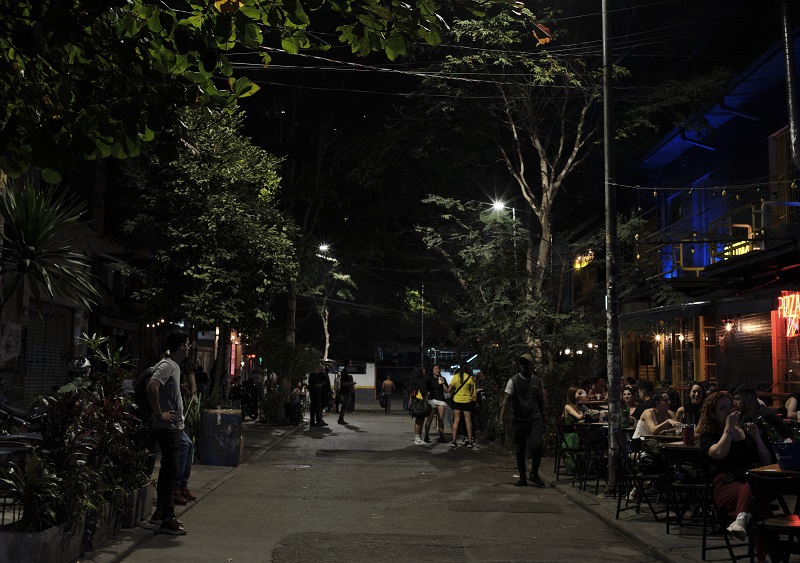Photos taken by Dominique Ziehl (Smith College), Student Correspondent for CET Brazil, Fall 2023
August 4
This weekend, a small group of us ventured into Vila Mariana to explore a different region of São Paulo, just a short drive away from our neighborhood in Perdizes. Carolina, one of our study abroad members, is Brazilian but moved to America when she was young, spending most of her time growing up there. We visited with her grandmother and stayed for lunch.
Afterward, we walked from the apartment to MAC-USP (Museo de Arte Contemporáneo de la Universidad de São Paulo), a contemporary art gallery residing in the main campus of the University of São Paulo. In fact, it’s one of the largest art museums in the country and hosts a fancy rooftop restaurant with a gorgeous view below.

From there, pedestrians are encouraged to take a bridge across the interstate to the most-visited urban park in South America, Ibirapuera Park (Parque do Ibirapuera). I’d liken its popularity to Central Park in New York. The space is used for leisure, exercise, child’s play, and even contains culture museums and other event spaces within its gates.

This is a photo of us hanging out at the kid’s apparatus
Later that night, a larger group of us CET students, Brazilian roommates, and other PUC exchange students walked to the backside of PUC for a block party. It’s a tradition for people to meet up after finishing their last classes of the week. It’s called Sextou, which wittily plays with Portuguese conjugation. It alters the word for Friday (Sexta) to the third person past tense to convey a celebration that the day has “turned to Friday.” It’s common for students to stay up very late at this party, and its unique location at the cross-section of a dead-end street makes gathering here relatively safe. The two bars right on this corner stay open to serve the crowd, and sometimes, drink carts are set up in the road to serve as well.

August 6
On Sunday, my apartment group went to Pinheiros to meet our Brazilian roommate’s sister. This district is a heavily trending area full of vibrance and grunge.


One block, in particular, is fully dedicated to bars and restaurants now (image on the right). Sitting outside as the sun sets is relaxing, as few cars pass through this street.
Street art and graffiti are very popular in this district. Interestingly, America’s connotations of graffiti and street art differ from Brazil’s. In America, graffiti describes tagging and otherwise “unartistic” vandalism on public surfaces. Street art refers to the creative murals done by artists. In Brazil, they call their beautiful street art “graffiti,” while “pichação” describes the other illegal taggings, which have a uniquely geometric, cryptic style.
Traveling abroad oftentimes looks only toward the highlighted or beautified landmarks and activities a country wants to offer, altering one’s perception of the totality of the region. It’s important to note that São Paulo’s genesis comes from historic inequalities that can’t go unnoticed. Since being here, I’ve been aesthetically drawn to its nightlife for this existential symbolism. The buildings, plants, colors, and other material aspects coalesce into something truly unique. And especially at night, the vast darkness highlights these visual details. Forgotten and abandoned spaces invoke a grungy essentiality about the city that is just as important as its glamorous counterpart.



A bustling restaurant on Rua Augusta (Augusta Street), just off Avenida Paulista.

A wheatpaste (glue-on) graffiti poster in Pinheiros reads, Ainda bem que você existe, which translates to “I’m glad you exist.”